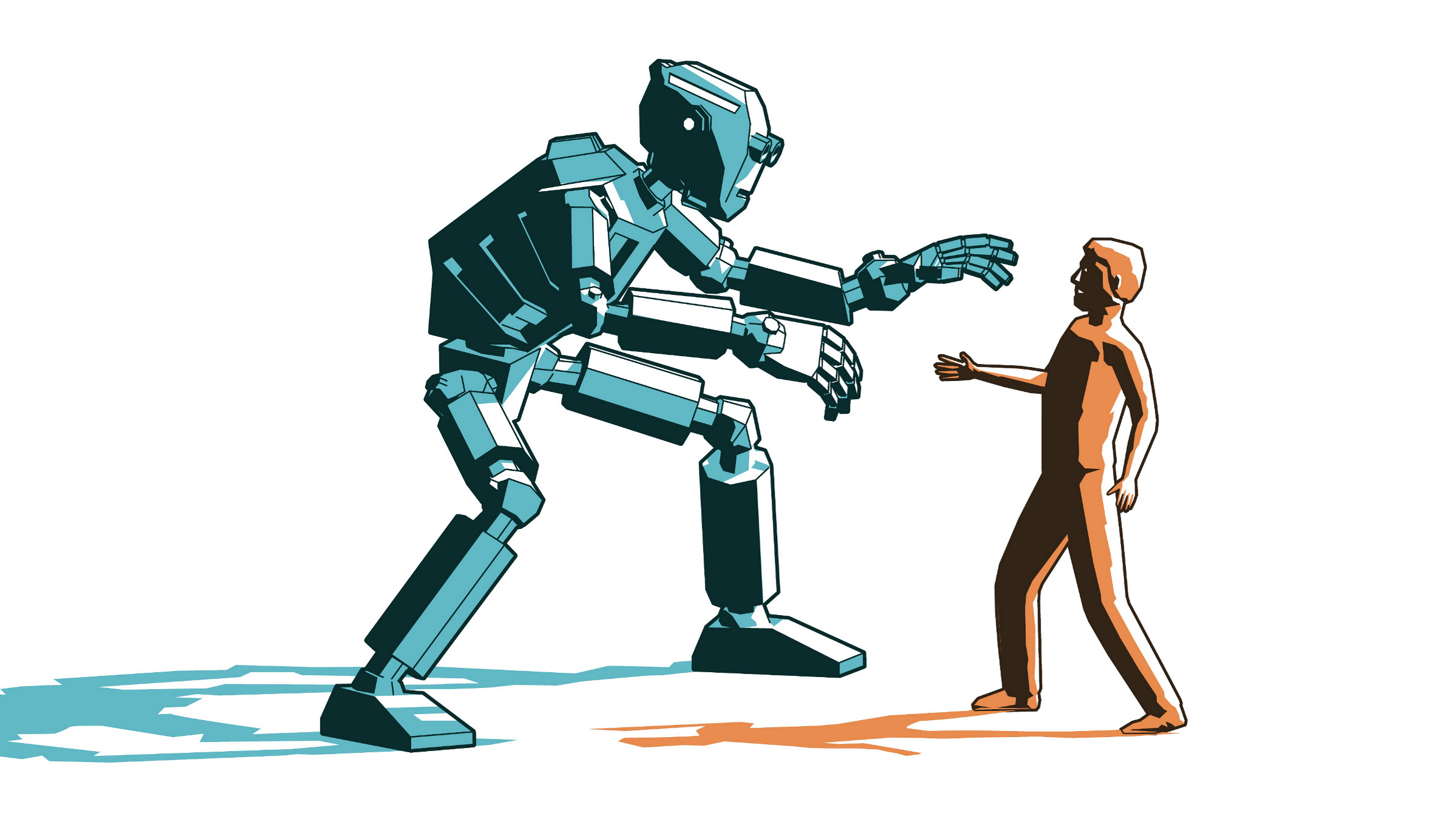
Only 1 in 500 patents makes its inventor money, and businesses are awash in great ideas of dubious market value (only about 4% make money).1 So why do people think innovation begins with a creative idea, is sold through an imaginative story, and diffuses through society because of novelty and merit? Innovators mobilize people to adopt ideas. Although they might start with idea creation, innovators focus mostly on other aspects: market offers, market testing, beta prototyping, production, sales, and customer-support infrastructures that companies use to get products adopted. In fact, 90% of innovation is in fostering adoption.1,4 Ideas are often stories invented after the fact to explain innovations that already emerged, as with the iPhone example discussed later in this column.
Yet the media telling of the story makes it sound as if ideation—the creation of ideas—is 90% of the work of innovation. Ideation has produced many inventions that never became innovations because no one adopted them. Many people are misled by stories that inaccurately equate innovation with invention. People who believe these stories put too little effort into adoption and are disappointed by their low success rates.1,5
Bob Metcalfe, the inventor of Ethernet, tells the story of 3Com, a company he founded to make and sell Ethernets.4 His story is full of accounts of his having to convince executives of companies they needed a network product they never heard of before, and then living up to the expectations he left them with. He spent one year developing his Ethernet idea and the next 10 years selling Ethernets. Sales do not matter in invention, but they matter in a big way in innovation. He summarized his effort with his famous saying, “Invention is a flower, innovation is a weed.”
Three Flawed Memes: Hindsight, Oversimplification, and Ideation
Innovation stories are tremendously influential in guiding our perceptions (and interpretations) about innovation process and hence our actions. An example is the innovation pipeline: an innovation begins as an idea and flows through stages of prototyping, production, and marketing before arriving in the marketplace. Another is the innovation funnel: a set of ideas is progressively winnowed by reviews, prototype tests, and market tests, until the few with greatest merit make it to the marketplace. A third example is network diffusion: an innovator injects an idea into a social network, where it spreads out across the communication channels of the network until everyone has a chance to adopt it. A fourth is the innovation cell, a protected pocket of innovators spinning off ideas into the surrounding environs.
These stories are all “sticky.” It is easy to form a mental picture of a pipeline with ideas flowing through it, or a series of progressively narrower funnels flowing one into the next, or waves of adoption washing through a network, or ideas spinning off a round-table. They are memes that hold our attention. However, these sticky stories contain flaws that lead the unwary into actions that do not work.
The first flaw is that our stories about innovation are retrospective. In hindsight, we can see all the actions involved in an innovation and describe a pattern they seem to follow. But as innovators “in the trenches” we experience things quite differently. Every action seems to have an unpredictable outcome and we cannot tell if it leads us closer to our desired innovation. So many things depend on actions of other people. Doubt and uncertainty are irreducible. You cannot “see” where you are in the pipeline, funnel, network, or cell; only future historians can pass those judgments. Bob Metcalfe did not find executives ready and waiting for Ethernets; he constantly had to confront their doubts about a product they never heard of before, persuade them of its benefits to their companies, and convince that he would be a trustworthy supplier of Ethernets. If you try to form an innovation plan around the pipeline, funnel, network, or cell model, your plan will almost always fail because the people involved cannot tell where they are in your imagined structure.
The second flaw is that our stories about innovation are tremendously oversimplified. The stories present the successful actions of innovators as deliberate, considered, and sometimes inspired choices by persons able to make sense of the situation and control it. Their individual actions fit together into neat causal chains whose outcomes align with the innovator’s intentions. Bob Metcalfe could say afterward that he visited the “ABC” company, overcame their doubts, and got their order for Ethernets. But when he was there nothing was certain. He had to learn their doubts and concerns, find a way to show them Ethernet took care of an important concern, and build trust in him as the salesman and supplier. How did he learn their doubts? Discover their unmet concerns? Construct a proposal on the spot for how they could try Ethernets at acceptable risk? Lead them to the conclusion he was sincere, competent, and had their best interests at heart? Bob will tell you he often had no idea what it would take to close a deal, and in many cases he failed to close a deal. He did not feel in control. The best he could do is approach each encounter with a sense of confidence he could lead the conversation to a successful conclusion. How did Bob cultivate a mood in himself that disposed him toward success?
Innovations are new practices adapted in a community, which displace other practices.
The third flaw is all the innovation models assume an idea starts the process. Someone’s idea triggers the pipeline, or feeds the funnel, starts a wave in the network, or seeds the cell. What if most innovations do not begin with an idea? For example, social innovations such as Mothers Against Drunk Driving or more recently legalized marijuana and same-sex marriage welled up in popular opinion and swept many people along. The leaders of these movements report they were reacting to injustices and not creating ideas. Many technology innovations seemed to well up out of circumstances of the time without anyone claiming to have put an idea into action. For example, the iPhone and smartphones that imitated it seemed to catch on because “the time was right” even though many previous similar attempts had failed. Blogging seemed to well up without anyone inventing blogging or even stepping forward afterward when there was an opportunity to claim credit and be recognized in Wikipedia. These examples illustrate the larger pattern: most innovations “emerge” in the practices of communities and are not caused by someone’s good idea.3 In fact, most of what we call “ideas” behind innovations are actually stories made up in hindsight to explain the practices already emerging.
With these flaws, it is difficult to see how careful strategic planning, innovation process management, and charismatic leadership can work consistently well. In a review of Barbara Tuchman’s March of Folly: From Troy to Vietnam, written many years ago, Gordon Wood wrote there was but one big lesson of history: “Nothing ever works out quite the way its managers intended or expected.”6 This larger lesson unfortunately has not yet made it into our dominant narratives about innovation.
Sticky innovation stories are easy to recall and fun to retell. The only way to displace these stories is to interpret innovation with new and better stories. You need a new story to dislodge a story.3
If Not Ideation, Then What?
If ideation is a relatively easy 10% of your effort, how should you spend the other 90%? What should you do? We like the story from Fernando Flores about innovation emergence.2 This story begins with the notion that innovations are new practices adopted in a community, which displace other practices. Emergence of a new practice begins when someone makes a proposal to combine existing practices in a new way to meet an unmet concern. The proposal is contingent on many factors: technologies and practices already in existence, unmet concerns in the community, the proposer’s timing and choice of concern to address, the social power of the proposer’s network, and the strength of the opposition.2 Bringing an innovation into reality, therefore, is unpredictable and relies on explicitly working for adoption.
Innovations emerge in spaces of practices, which are constantly drifting and changing as powerful forces converge and conflict.
For example, Steve Jobs did not simply create iPhone in a flash of genius and sit back and wait for the profits to roll in. His contribution was to believe in a vision of a lightweight portable phone that could be customized to its owner’s detailed personal preferences, and to mobilize a business network to make it happen. The Apple company invested a lot of work to transform the iPhone vision into an adopted technology. The transformation was contingent on the existence of other components already, or soon to be, in place. Apple worked with suppliers to build smaller and more energy-efficient components such as hard disks, touch displays, scratch-resistant gorilla glass, sensors for GPS and motion, and batteries. Apple adapted the operating system MacOS into iOS that would manage an interface presenting a large collection of user-chosen apps. Apple adapted the iTunes store into an apps store and cultivated a network of a million programmers to populate it with downloadable apps. Apple worked with the telecommunication companies, initially AT&T, to create data plans within the cellular phone network. Apple worked with professional product designers and marketers to position the iPhone as a lifestyle enhancer rather than a mobile phone. The iPhone was contingent on all these components and the business deals that made them work. Its adoption took a great deal of business and political skill. Yet the popular stories focus on Jobs alone and ignore the huge amount of work Apple invested to get the iPhone widely adopted. You will find similar stories in all the other technology companies. The standard stories focus on the genius of the founders and ignore the hard work they put into adoption.
Six Fundamental Skills
The six skills in the accompanying table nicely summarize what innovators do.2 Innovations emerge in spaces of practices, which are constantly drifting and changing as powerful forces converge and conflict. Innovators propose changes of practice and shape their adoption. In the swirl of the forces nothing is certain. Multiple people are likely to come up with competing proposals at about the same time, each responding to the sense of an unmet concern that anyone who cares to listen can detect. These six skills are based on your ability to listen for concerns, histories, movements of social power, barriers, moods, reactions to offers, and followers in networks. They depend only loosely on communicating your ideas or telling your stories.
Offering and mobilizing are the core skills. Your offers are proposals to take designs into social movements. Can you make offers that intrigue people with new possibilities to address their (often unspoken) concerns and do not seem too risky? Can you turn your networks (or build a network) into a following of people who commit to the new practices the offer brings? Do you understand who will resist or support and what actions will harness the power of the network to shape the emerging new future?
Detecting, appropriating, navigating, and surfing all support the core skills. Detecting means to sense an unmet concern and form an inkling that you can do something about it. Appropriating means to immerse in related domains to discover marginal practices and interpretations that can help you with your inkling. Navigating means to move toward a goal in a complex and uncertain world; the metaphor recalls seafaring explorers in open oceans who must respect the power of the waves and the limitations of their crews, avoid storms, and deal with emergencies. Surfing means to ride waves that move in the direction you seek and keep your balance when turbulent network forces buffet you.
To be an innovator, learn these six skills.




Join the Discussion (0)
Become a Member or Sign In to Post a Comment